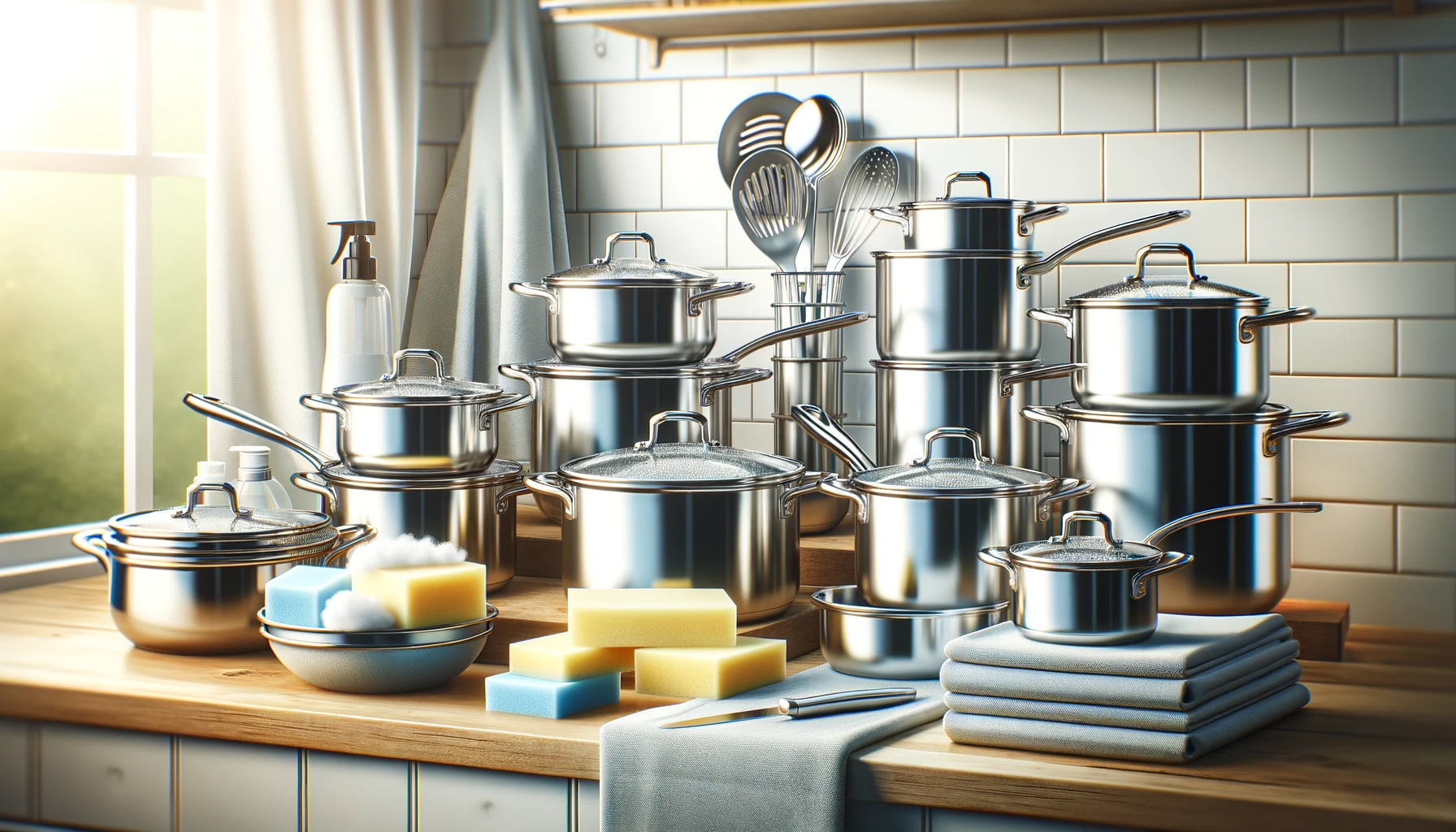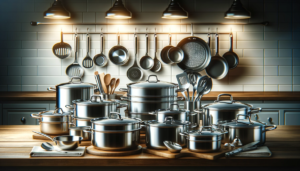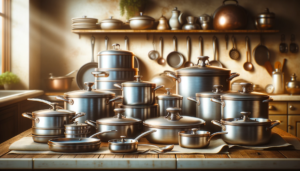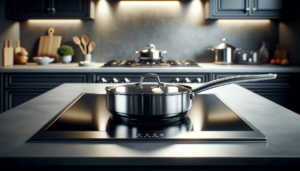If your Cuisinart stainless steel pots look lackluster lately with grimy interiors or exterior scratches, don’t worry – with the right gentle cleaners and techniques you can have them looking good as new again.
Learning the proper methods for cleaning, removing stains, and maintaining Cuisinart stainless steel cookware ensures your investment stays looking great and lasts for years.
Let’s dive into the key supplies to have on hand and step-by-step processes for cleaning, de-staining, and caring for your pots and pans.
How to Clean Cuisinart Stainless Steel Cookware
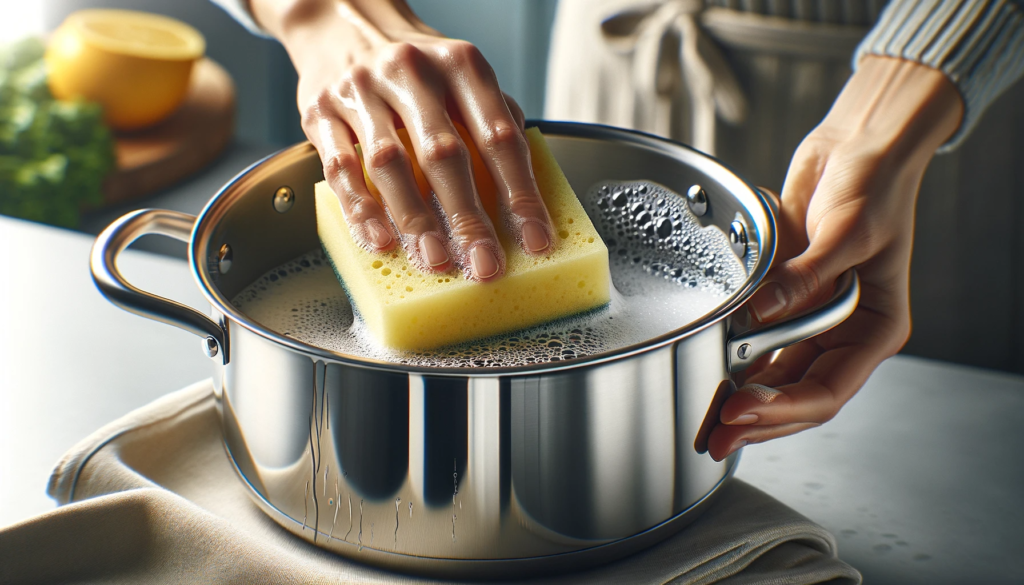
The key steps for cleaning Cuisinart stainless steel pots and pans involve using warm, soapy water and soft scrubbers like sponges or cloths to gently wipe away dirt and residue from interior and exterior surfaces.
For stuck-on gunk, let pans soak before scrubbing and use baking soda or vinegar solutions to help lift stains.
Avoid abrasive pads or powders that could scratch the finish.
Make sure to always hand dry thoroughly after washing.
In short, be gentle and take your time cleaning to keep your Cuisinart stainless looking its best for longevity.
We will explore more specifics below on supplies, processes, and care for maintaining your cookware.
Supplies Needed
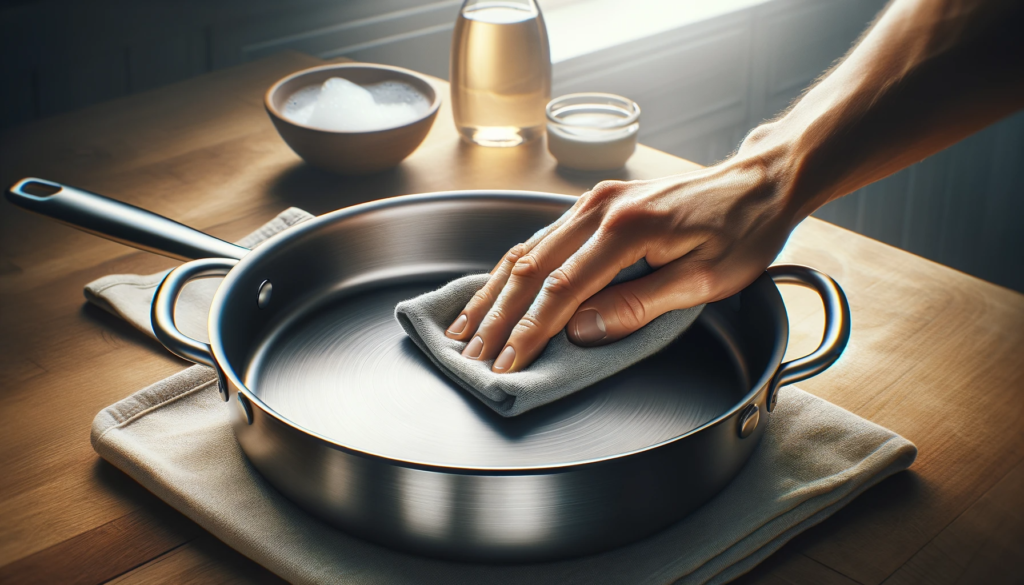
Tackling the cleaning of your Cuisinart stainless steel pots and pans requires having the right supplies readily available before getting started.
This will make the entire process quicker, more effective, and ensure your cookware looks immaculate once the cleaning is complete.
You likely already have most, if not all, of what you’ll require on hand in your kitchen.
Dish soap designed specifically for washing dishes and cookware is a must.
The soap helps cut through built-up grease from cooking and allows you to lift away grimy food residue from the surface of the pans.
Be sure to choose a gentle formula that does not contain harsh chemicals which could wear down the protective finish of the stainless steel over repeated use and washings over time.
For scrubbing, you will need a soft sponge that is firm enough to provide a bit of abrasion to lift dirt but without being so stiff and coarse that it risks scratching the finish.
Sponges made specifically for nonstick pans are a good choice.
Standard dish sponges may be too abrasive for regular use.
For tackling tougher stains or discoloration, having some baking soda, white distilled vinegar, and steel wool pads on hand provides options for light duty or more heavy-duty cleaning as needed.
Always start with the least abrasive method first, then only move to something slightly more abrasive if the initial method was unsuccessful at removing the grime.
The baking soda, vinegar, and steel wool each serve a purpose for dissolving and lifting different types of gunk and buildup so having all three readily available in your supply kit gives you the right tools for any cleaning scenario.
Cleaning The Inside
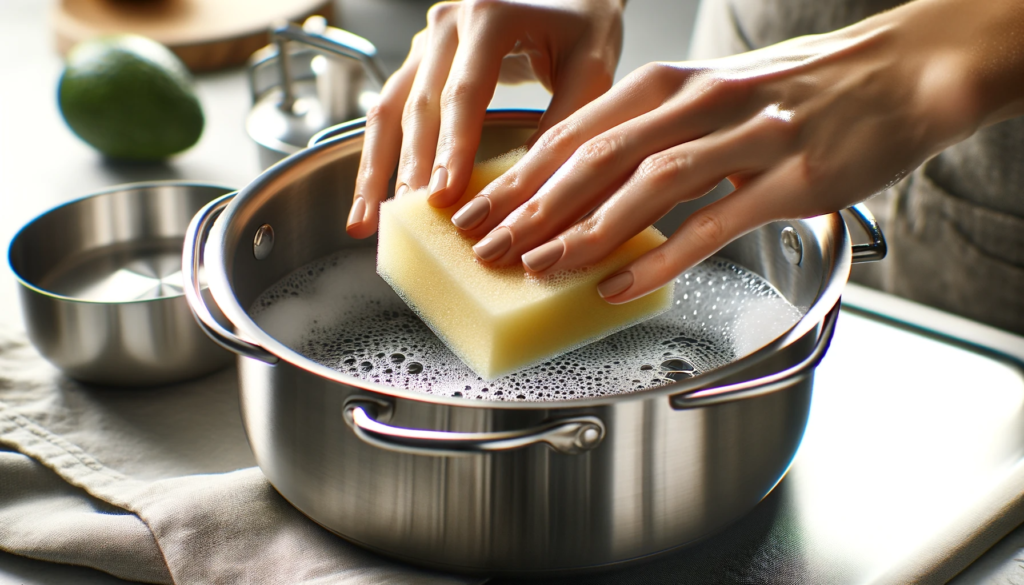
In time, the inside of your Cuisinart stainless steel pots and pans can accumulate stains from ingredients like spices, sauces, or oils.
Burnt-on remnants of foods that bubbled over or stuck to the bottom can be tricky to remove as well.
Even mineral deposits from water used for boiling or simmering can leave their mark over repeated uses.
Getting the interior gleaming like new again takes a little bit of elbow grease along with the right gentle cleaners.
The key is to avoid anything too abrasive or harsh that could end up scratching or damaging the stainless steel surface you are trying to clean.
As a first step, fill the soiled pot or pan with hot water from the tap then squirt a generous amount of dish soap into the water as well.
Allow this mixture to soak for at least 15 minutes, which will soften and help loosen any dried-on food bits or residue.
Next, use a soft sponge or dishcloth along with a small squirt of dish soap to gently scrub the inside cooking surface of the pan.
Apply light pressure using small circular motions.
The combination of the hot soapy water along with the sponge should help lift dirt and grease easily without needing to bear down hard or scrub aggressively which can lead to unintended abrasions.
For stubborn spots of burnt or stuck-on food that do not lift after scrubbing with soap and a sponge, sprinkle a moderate amount of baking soda directly onto the affected area.
Let the baking soda sit and penetrate for 2-3 minutes before scrubbing again with the soft sponge.
The baking soda will provide added abrasion to help break down and dissolve the bonds causing the food to stick.
Check if the spot has lifted after scrubbing the baking soda paste, and repeat the process as needed for difficult stains.
Once fully cleaned, thoroughly rinse the inside of the pan under steady hot running water from the faucet.
Be sure to rinse away any baking soda residue remaining inside the pan.
Hold the pan upright at an angle while rinsing so the stream of water runs along the bottom and partially up the sides.
Tilt and rotate the pan to allow the water to contact all interior surfaces and sweep away any leftover debris.
Cleaning The Outside
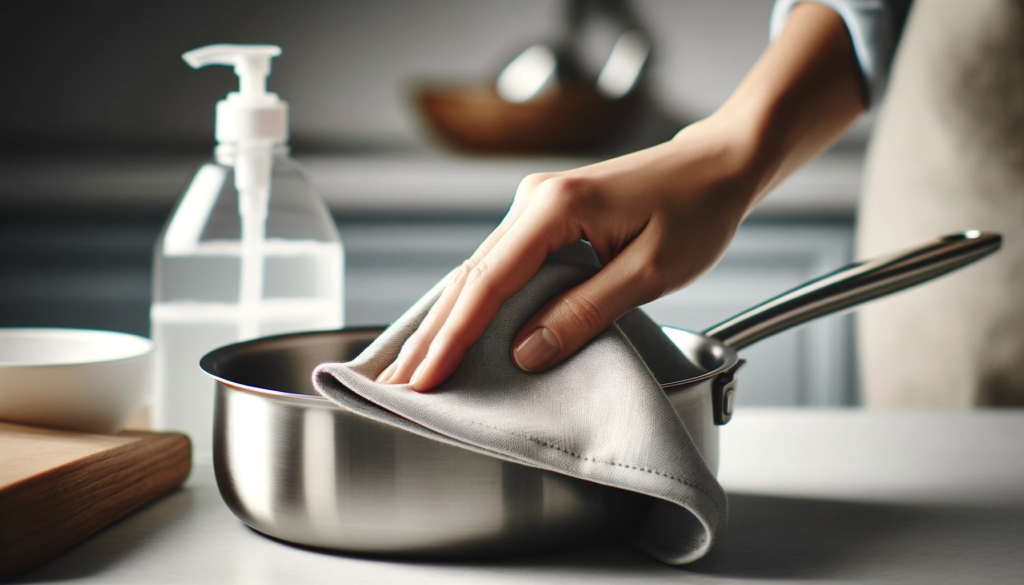
While the interior cooking surfaces of your Cuisinart pans will inevitably require frequent cleaning from regular use preparing meals, grime can also build up on the external surfaces over time.
From greasy fingerprints on handles to messy spills down the sides, splatters of sauces on the exterior walls, or stovetop burner gunk on the bottom, the external finish will occasionally need attention too.
The best method for cleaning stainless steel pan exteriors is to use dish soap designed for handwashing along with warm water.
Apply a small dollop of soap directly onto a soft sponge, then wipe down handles, lid surfaces, rims, bottoms, and outer walls.
Concentrate on visibly soiled areas, gently buffing in small circular motions rather than scrubbing aggressively.
The warm water helps cut through and dissolve oily residue on contact so that grime can be simply wiped away without heavy scrubbing that risks minor cosmetic scratching to the finish over time.
When cleaning, pay special attention to get into crevices where grease and food debris can collect such as around rivets, trim details, and under pan handles.
After thoroughly cleaning exterior surfaces with dish soap and water, carefully rinse away all soap residue under warm running water.
Then immediately hand dry the pan using a clean soft lint-free dish towel.
Gently rub the surface in the direction of the metal grain as you dry for an added shine.
Allowing water droplets to air dry can lead to unsightly calcium or mineral deposits over time.
For stubborn external stains that regular dish soap does not tackle fully, make a loose paste from baking soda and water.
Use a soft sponge or cloth to gently rub the paste onto the soiled area, allowing it to sit briefly before rinsing clean.
The light abrasive properties of baking soda can lift residue without risking harm to the steel.
Removing Discoloration

While stainless steel itself does not rust or corrode, discoloration can occur on cooking surfaces over time with repeated heating, simmering sauces, etc.
Typically this shows up as yellowish or brownish staining on the interior that can be difficult to remove using normal dish soap and sponges.
Before resorting to heavy-duty stain removal methods, first attempt a simple stain-lifting technique boiling a vinegar and water solution.
Fill the pan fully with warm water from the tap, then pour in approximately one cup of distilled white vinegar.
Bring the pan contents to a full rolling boil.
Allow the vinegar solution to boil steadily for 10-15 minutes.
This boiling action helps loosen the staining by dissolving some of the bonds causing it to adhere.
After boiling, carefully discard the hot vinegar water solution, taking care not to spill.
While the pan is still warm from the vinegar boil, sprinkle a generous coating of baking soda powder directly onto the discolored area forming a wet paste.
Then use either a soft sponge or dishcloth to gently scrub the fizzing paste over the stain in tight circular motions.
This light abrasive action will lift residue without risk of scratching.
Allow the baking soda paste to sit for at least 2-3 minutes before rinsing to give the ingredients time to fully interact and work at dissolving the bonds.
The combination of the vinegar boil followed by a baking soda paste scrub can remove even stubborn discoloration that resists other cleaning attempts.
Repeat as needed for difficult deposits that do not lift right away.
For the most stubborn tiny spots or stains that linger after other methods, very gently rub the area with a fine grade steel wool pad.
Use extremely light pressure and small motions to avoid damaging the stainless steel finish.
Thoroughly rinse and immediately hand dry with a soft towel after steel wool use.
Maintaining The Finish
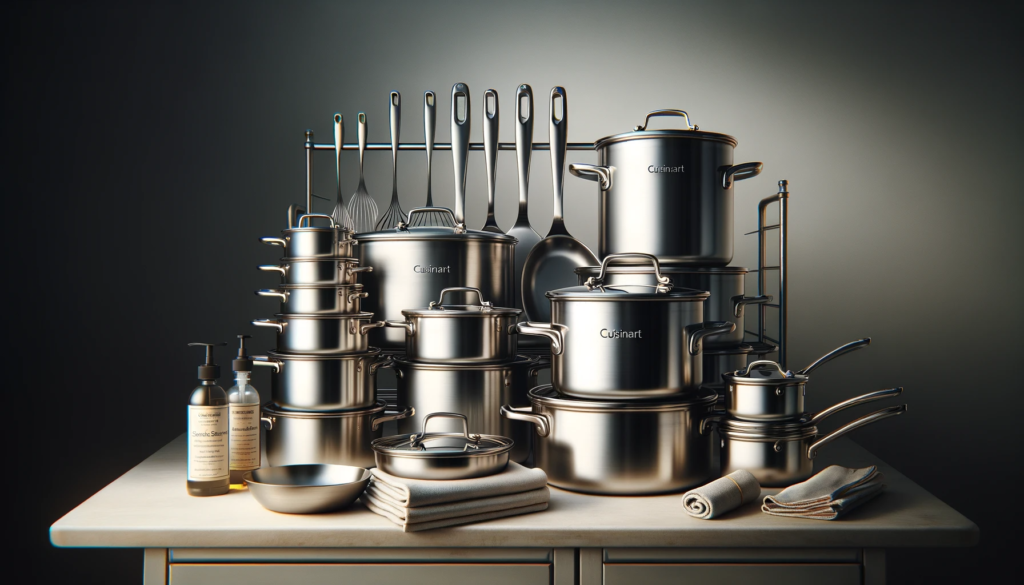
By following a few simple care and maintenance steps after each use and cleaning, your Cuisinart stainless steel cookware pieces should retain their performance, durability, and good looks for many years before showing significant wear.
Avoiding certain bad practices can help prevent exterior abrasions and tarnishing of interiors over time.
One of the most important habits is to steer clear of ultra-abrasive scouring pads, cleaning tools, or chemical powders when cleaning.
Coarse pads and cleansers often contain gritty compounds or minerals which will eventually degrade and scratch stainless finishes, leading to an unattractive appearance over time.
The rough jostling effect inside a hot or harshly chemical dishwasher cycle can also slowly but perceptibly erode stainless steel cookware and damage its protective layer.
For longevity of use and performance, it is wise to exclusively hand wash Cuisinart pots and pans using mild dish soap and soft sponges or scrubbers only.
Take special care not to scrape metal serving spoons or other utensils against cook surfaces.
To help maintain the pristine finish and keep your stainless pieces looking like new after each washing, consider applying a small amount of cooking oil when pots and pans are still warm but have been thoroughly dried.
Use a clean paper towel or soft lint-free cloth to briskly rub a thin oil coat onto interior cooking surfaces and exterior finishes, then wipe away any excess.
This mineral oil barrier prevents surface oxidation between uses.
Conclusion
Properly caring for your Cuisinart stainless steel pots and pans ensures they stay looking great and performing at peak efficiency for many years.
Following the cleaning, maintenance, and storage tips provided keeps the cookware shiny and free of discolorations or scratches.
With the right gentle products and a little elbow grease, you can keep your Cuisinart stainless cookware sparkling like new.
